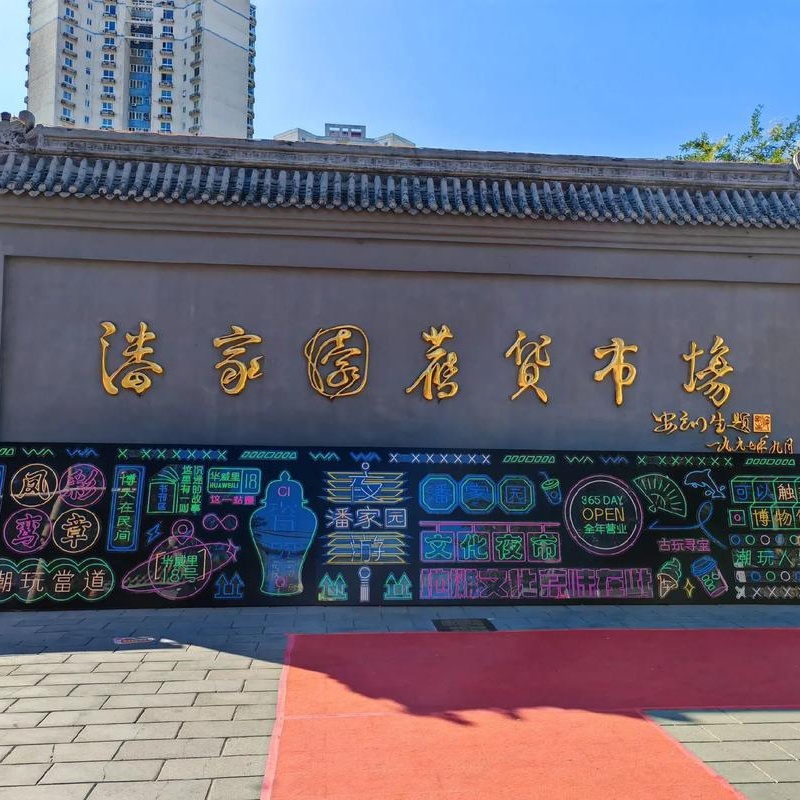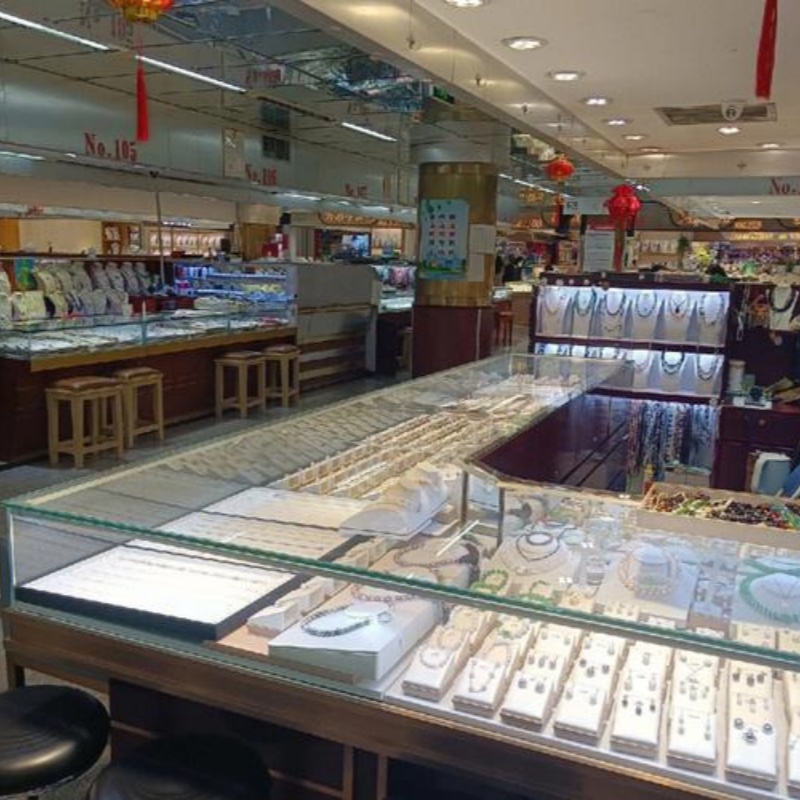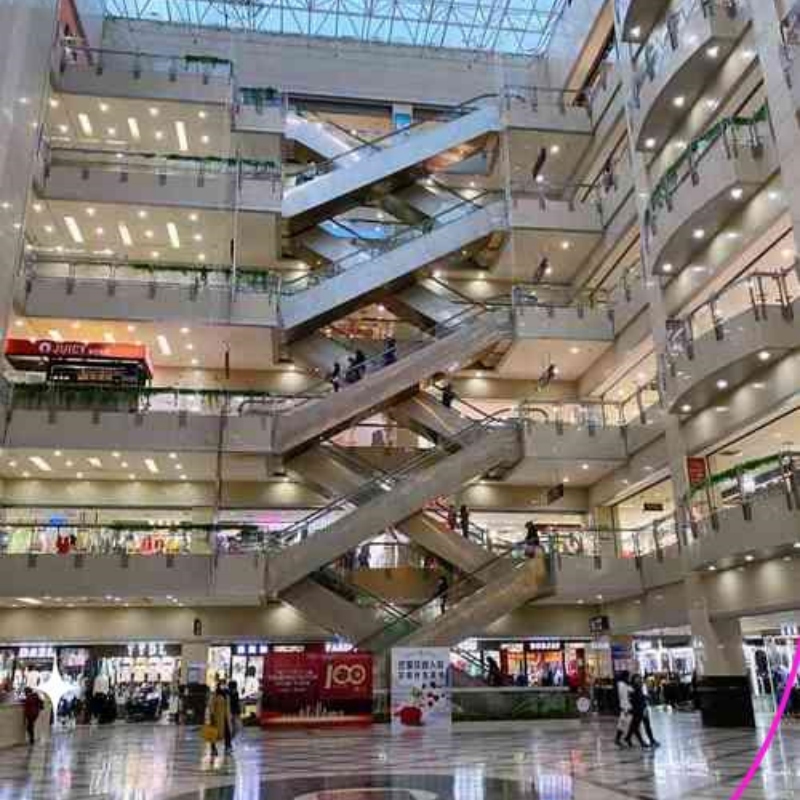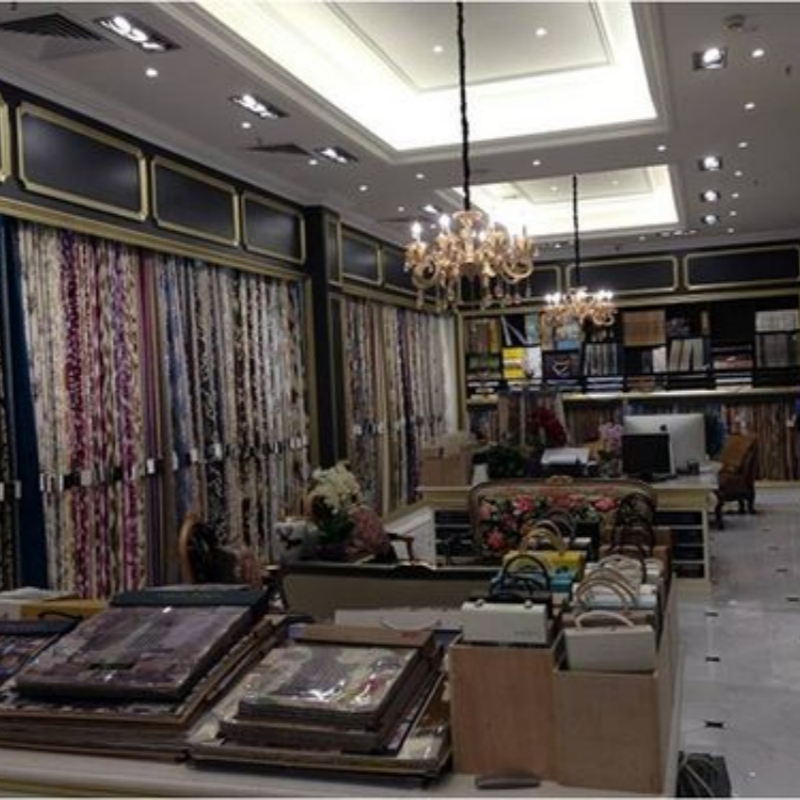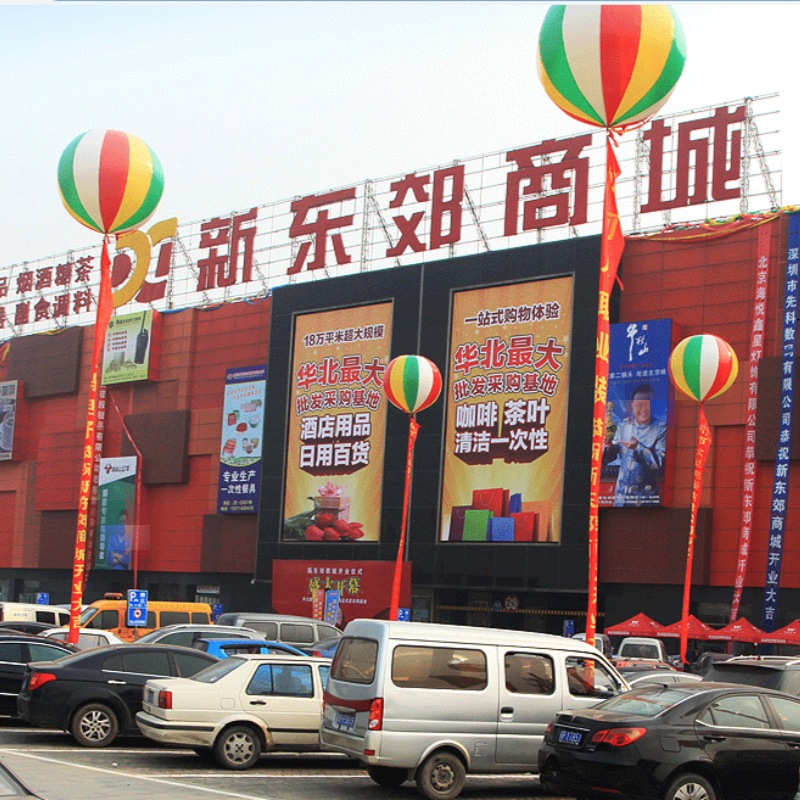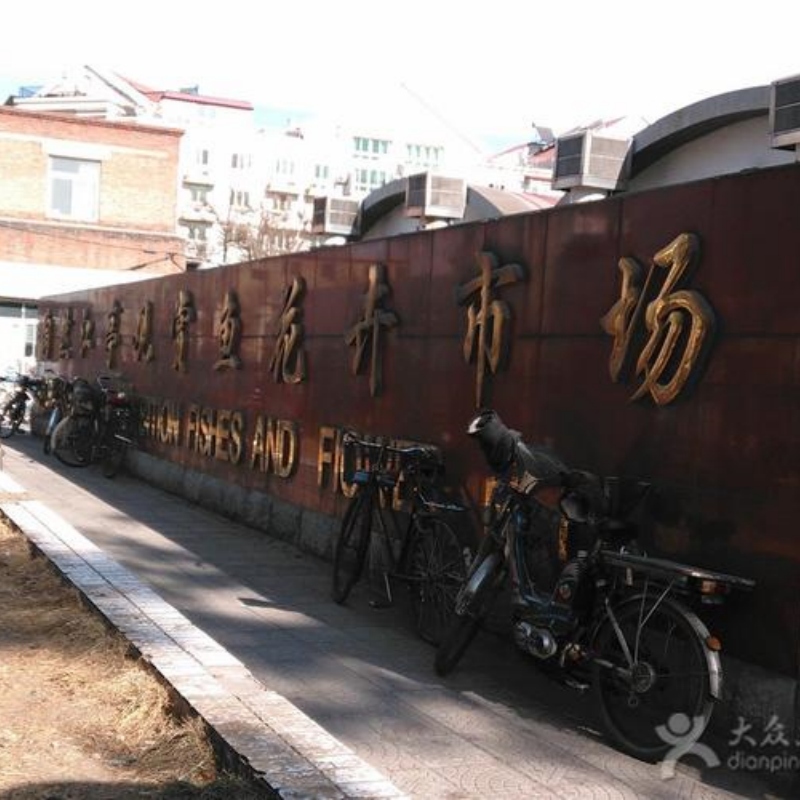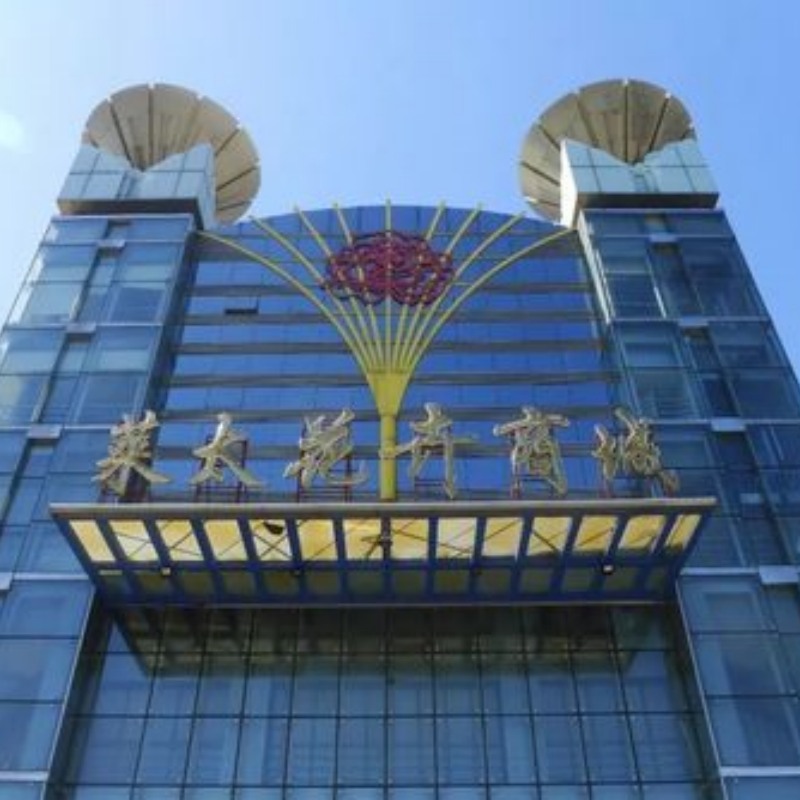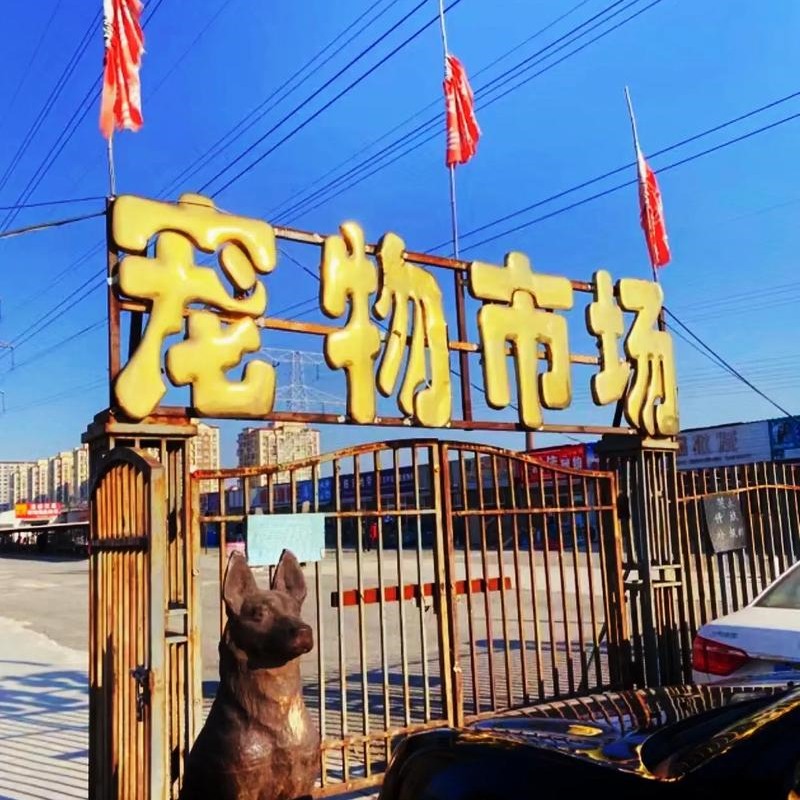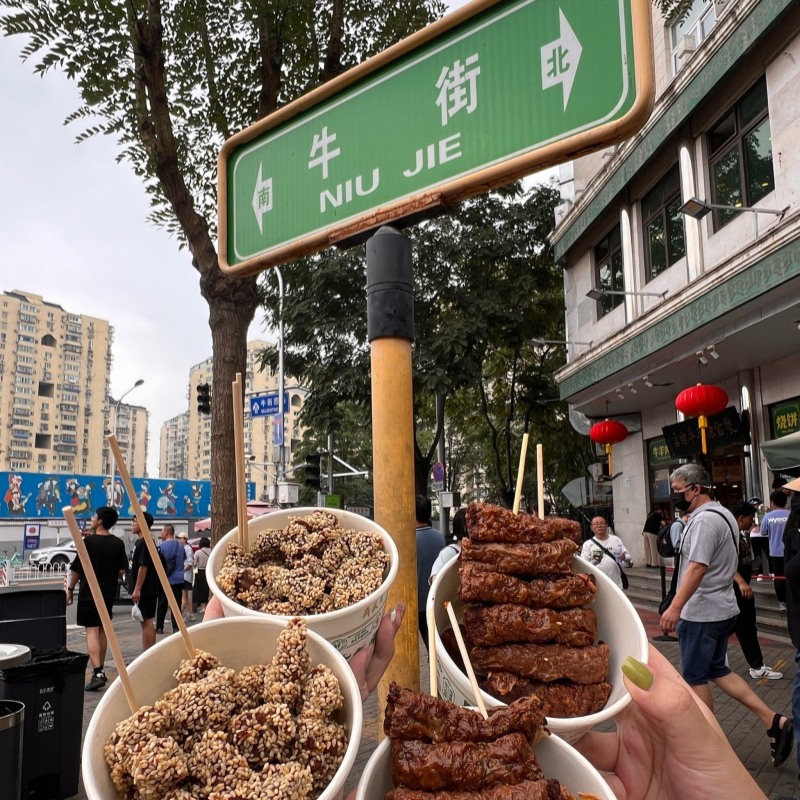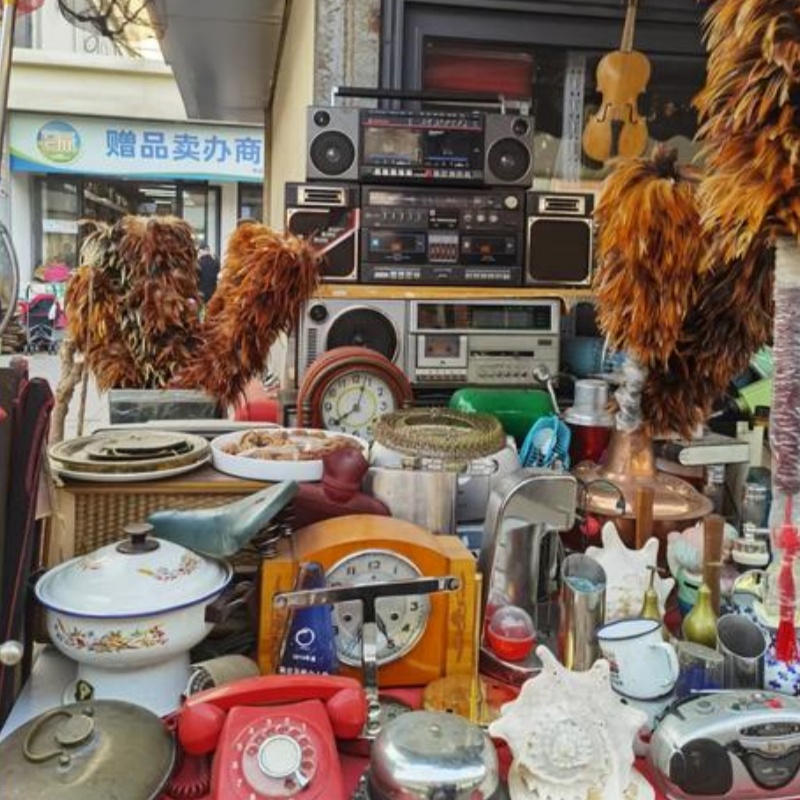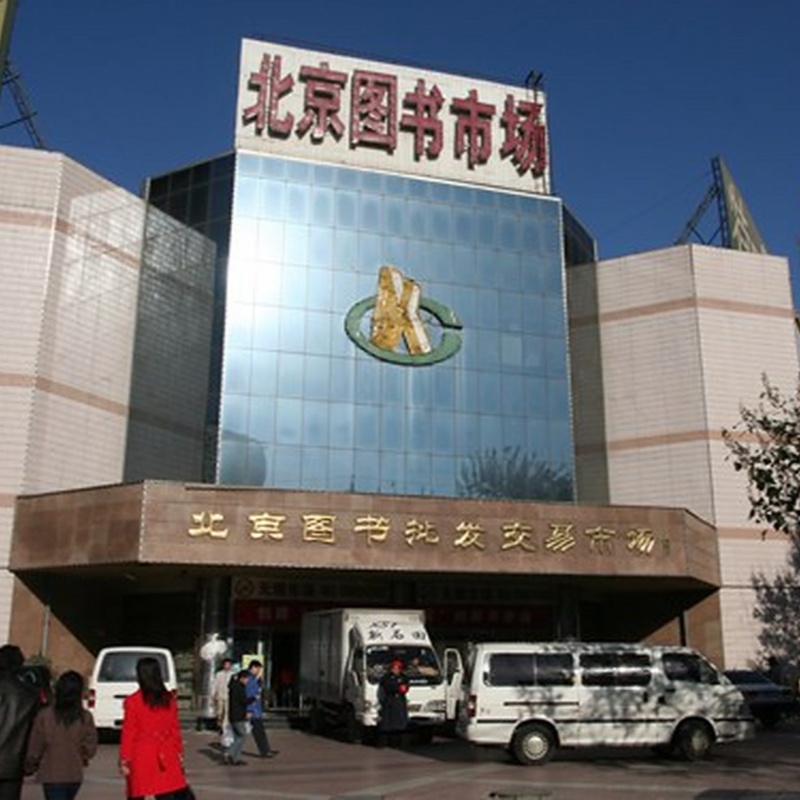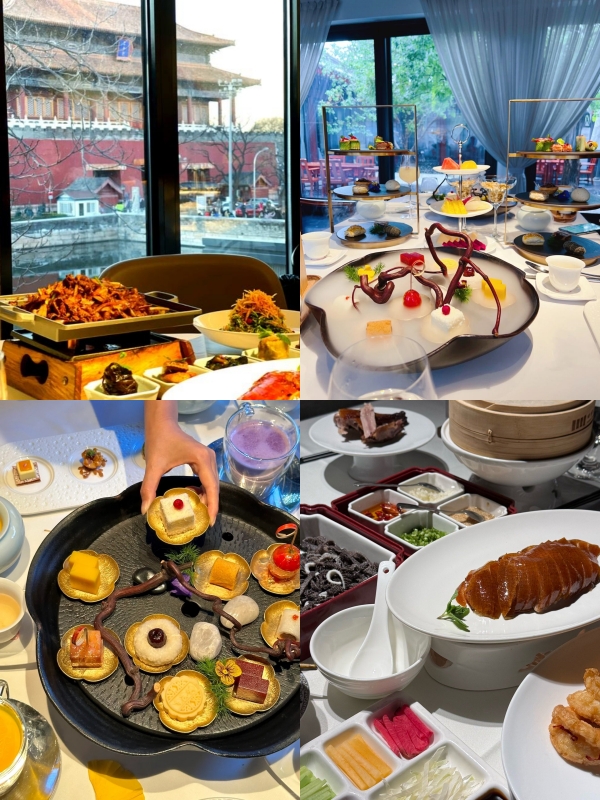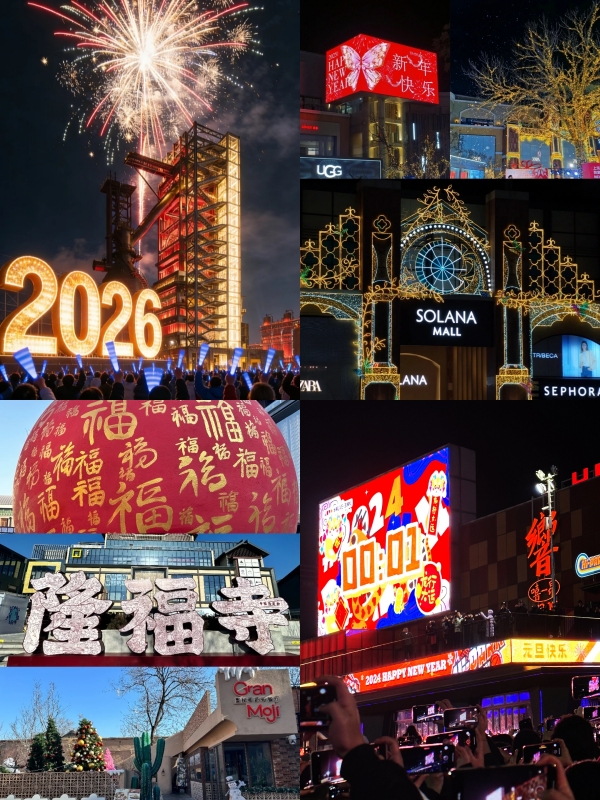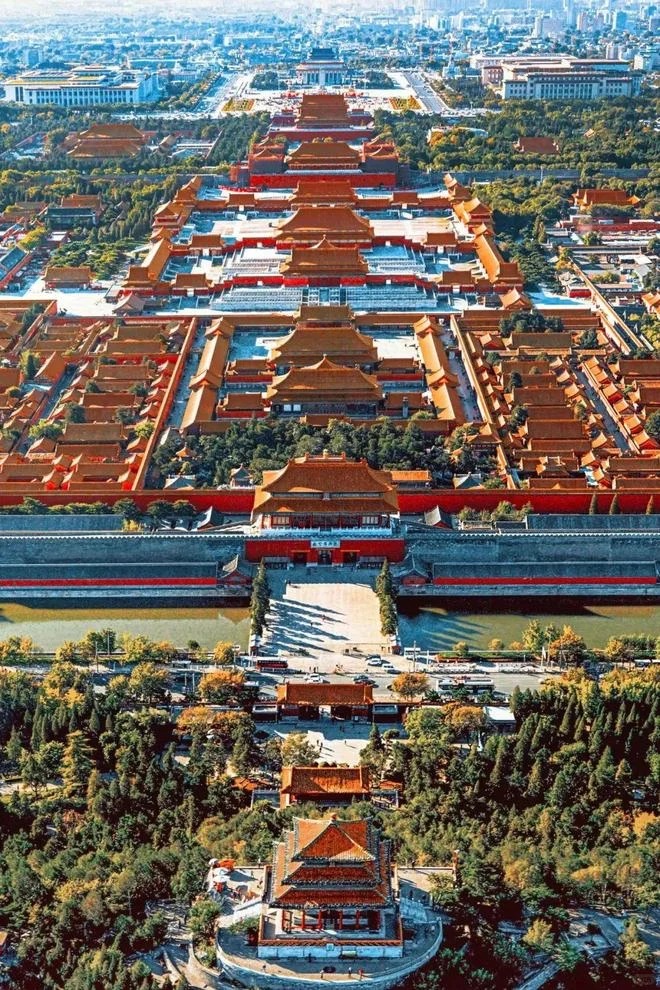The average first-time visitor to Beijing might be expecting grand palaces or ancient walls, but the city’s true delights are frequently found in a noisy bustle of daily markets. I can still remember my first stroll through one of the bustling markets in Beijing — with the smoky smell from grilling skewers, vendors haggling and lanterns casting a glow — it hit me all at once. It’s mostly overwhelming, that kind of rush of energy, but it can be addictive if you’re not careful. These markets are more than just a place to shop; they bring out the rhythm, and the daily unfolding of life, in the city. With each twist, there’s something new around the bend, and that discovery compels you to keep noodling around. It’s these markets in Beijing that deserve just as much if not more attention than the famous landmarks.
Shopping for Treasures and Souvenirs
- Silk Street
- Panjiayuan Flea Market
- Hongqiao Pearl Market
Silk Street (Xiushui)
In Beijing, the most raucous is Silk Street - a circus of bargaining and never-ending stalls. I remember my first visit there, with vendors whirling colored scarves and switching over to Japanese and Russian when the words and energies crossed paths. The excitement isn’t just in what you buy but in the playful haggling. It is that energy and internationalism that makes Xiushui so memorable.
Shopping here offers clear highlights. Custom suits from decades-old upstairs shops (from around 600–800 RMB) are a hit among locals and the visiting crowd. There are silk scarves at LilySilk (100 to 200 RMB each) for a little elegant accessorizing; teapots (150 RMB) and chopsticks sets (30 to 50 RMB), from one of the family stalls, make thoughtful souvenirs. There is also street food as part of the experience – jianbing pancakes (15-20 RMB) at the entrance are a definitely snack between bargaining rounds. When you have these names and prices specific in mind, the market feels a little less daunting, and a lot more like treasure hunting.
It’s hard to resist the crowded aisles. Bright banners drape the overhead recesses and fluorescent lights bounce off of cloth, and there’s laughter at the haggling. Photographers delight in finding silk colors spilling from racks or murals hidden in stairwells. It serves as both a site for bargains and photo ops, which makes it a functional and lively stop on any itinerary.
📍 Location: Chaoyang District, Jianguomenwai Avenue, 8 Xiushui East Street
🕐 Hours: 9 a.m. – 9 p.m.
💰 Average cost: 50–200 RMB depending on bargains
🚇 Transport: Subway Line 1, Yong’anli Station
🛍️ Tip: Stay friendly while bargaining—smiles usually bring better prices.
There’s so much more to explore at Xiushui Street—read Silk Market Beijing: Real Finds, Tourist Traps & How to Shop Smart and add extra joy to your trip.
Panjiayuan Flea Market
On the weekends, Panjiayuan is a labyrinth of treasures. The true attraction is not authenticity but discovery itself. Shelves of carved jade (200-500 RMB depending on the size), propaganda posters (50-150 RMB) and figurines to accompany either (80-200 RMB) draw visitors in, while wandering does feel like a step into Beijing’s troubled, but interesting past – one of the most distinctive markets in Beijing.
A clear shopping project eases the visit. Snuff bottles (100 to 300 RMB) and Cultural Revolution pins (20 to 50 RMB each) are on offer at long-established stalls, while calligraphy brushes (30 to 80 RMB) and old books (from around 40 RMB) are stacked high on tables. Zhang’s Tea Corner, a family-owned stall, pours freshly brewed cups for around 15 RMB each; small stands hawk antique-style postcards (10 RMB apiece). Most of the antiques were reproductions, but the thrill is in searching for them and bargaining.
The atmosphere in the market is disordered and yet photogenic. Morning sunlight dances on rows of statues, shadows stretch across stalls and murals enliven concrete walls. From green jade shimmering beneath bulbs to tall stacks of vinyl records (60-100 RMB each), and even artisanal jewelry for sale (from 50 RMB) there’s a snap around every corner here, making it as much fun for photographers as it is an essential stop off on any visit to Beijing!
🗺️ Location: Chaoyang District, 12 Panjiayuan Nanli
🕒 Hours: Early morning to late afternoon, best on weekends
💰 Average cost: 50–200 RMB depending on items
🚇 Transport: Subway Line 10, Panjiayuan Station
🔍 Tip: Arrive before 9 a.m. for the best finds.
Hungry for late-night bites in Beijing? See 7 Unmissable Night Markets in Beijing for Food, Shopping, and Culture.
Hongqiao Pearl Market
Over the road from the Temple of Heaven, Hongqiao is known for pearls and raucous bargaining. The allure is coming not just from jewelry but through conversations with vendors who are explaining grades and prices. And It’s one of the markets where you can see something along with shopping.”
The shopping process is straightforward: Freshwater pearls sit on low shelves (100 RMB and up a strand), saltwater ones upstairs (300-800 RMB, price depending on quality) and custom stringing services (50-100 RMB). Hongqiao Pearl Workshop are a good stop for quality products, andLing’s Jewelry Stall can offer colorful freshwater pearl earrings from 60 RMB. Outside, food stalls sell quick bites of fried dumplings (15 RMB a portion) or milk tea (20 RMB), for refueling between shops. There are clear targets, so browsing feels structured and rewarding.
Inside, lights are bright and the chatter provides energy. Pearls gleam under lamplight, mirrors craze with reflected images and languages crowd the atmosphere. Photographers like to take close-ups of trays of pearls or balcony vistas of the glowing hall, turning Hongqiao as much into a shopping expedience as a cultural one.
🗺️ Location: Chongwen District, Tiantan Road
🕐 Hours: 9 a.m. – 7 p.m.
💰 Average cost: 100–500 RMB depending on pearls
🚉 Transport: Subway Line 5, Tiantandongmen Station
💡 Tip: Ask vendors to explain grading before buying.
Purchasing Home Goods and Decor
- Bairong International Flea Market
- Fangshi International Curtain Market
- Xindongjiao Market
Bairong International Flea Market
In Beijing you will find Bairong International Flea Market it is also one of the largest wholesale shopping locations in the city. It spans more than one floors and sells everything from apparel to electronics. Its appeal is its overwhelming heterogeneity — lines of stalls hawking budget fashion, household goods and curios that can keep shoppers busy for hours.
Shopping here is diverse. There are many clothing stalls that sell T-shirts and jeans (for starting from 30–60 RMB), and shoe shops also offer sneakers (from around 100 RMB). They even have electronic stands selling phone accessories, chargers and headphones for 20–80 RMB. At smaller stores like the Happy Stationery, you can find notebooks and pens (10–30 RMB) while household sections have kitchenware (50–150 RMB). Informed pricing makes it easy to refuse to overpay, and haggling remains one of the signature elements of the experience.
It’s thriving but workmanlike. The masses move through long hallways, and neon lights beckon shoppers to the installations’ themed sections throughout the pavilions; upstairs are food courts serving noodle bowls (25 RMB) or milk tea (15 RMB) to recharge. Photographers take pictures of colorful shop displays and the size of the mall. It’s not elegant, and there is little focus on fresh ingredients for cooking rather than takeout, but that makes Bairong one-of-a-kind in Beijing markets.
📍 Location: Fengtai District, Yongwai Street
🕒 Hours: 9 a.m. – 7 p.m.
💰 Average cost: 50–200 RMB per person
🚇 Transport: Subway Line 10, Jinsong Station, then bus or taxi
🔥 Tip: Bring cash and be ready to negotiate, as many stalls don’t accept cards.
Fangshi International Curtain Market
Beijing’s king of home furnishings, Fangshi International Curtain Market is the place for curtains, fabrics and upholstery. The charm lies in the infinite variety — hundreds of merchants offer bolts of fabric in every shade and texture you can think of, which makes it bulldozers-riding-over-hills paradise for anyone decorating a new home or revamping their space.
It’s practical, it’s creative. You can buy ready-made curtains (200–500 RMB a set) as well as custom tailoring (600 RMB for hand-made, depending on the fabric). Shoppers also score sofa covers (150–300 RMB), tablecloths (50–100 RMB) and bed linens (200–400 RMB). Stylish shops such as Elegant Home Textiles specialise in European-style designs while smaller stalls sell lace trims (10–30 RMB per meter) and cushion covers (40–80 RMB each). Services: Tailoring is also available in store, so that after purchasing changes can be made straight away.
The place is lively but orderly. Piles of rolls of fabric, displays hanging from the ceiling in all different colors and lights make for an inspiring and photo worthy environment. Vendors frequently offer samples and design ideas that can help visitors visualize how fabrics will appear in their homes. If you're in search of interior inspiration, Fangshi International Curtain Market is the one to visit for best Beijing markets.
📍 Location: Fengtai District, near South Third Ring Road
🕘 Hours: 9 a.m. – 6 p.m.
💰 Average cost: 100–300 RMB per person
🚇 Transport: Subway Line 10, Shiliuzhuang Station
🪡 Tip: Bring window measurements to get accurate quotes for custom curtains.
Xindongjiao Market
In Beijing, Xindongjiao Market is one of the large wholesale markets for its widespread products coverage. There’s a sense of bustling commerce and an array of stalls that stretch on forever selling everything from clothes, shoes, toys and everyday items. Walking in can feel like entering a city within the city, with locals haggling and shopkeepers barking deals.
Shopping here is the land of quantity and bargains. Shoe shops sell trainers from 80 RMB, clothing stalls shirts and trousers for 20 – 50 RMB, while aisles are dominated by row upon row of children's toys (10 – 40 RMB a piece). Wave with natives to household items including kitchenware (30-100 RMB) and bedding (100-200 RMB). Established stores such as Golden Sun Wholesale Clothing draw throngs seeking volume prices, and snack vendors offer fried dough twists (10 RMB) and milk tea (15 RMB) for pick-me-ups.
By late morning, the market is crowded with wholesalers and local families. Stalls bursting with colorful clothes, corridors stuffed with boxes and neon signs pointing to various sections make for a frenzied but vivid scene. It’s not as slick as the tourist streets, but for those looking to experience some real wholesale shopping, Xindongjiao is head and shoulders above any other markets in Beijing.
📍 Location: Chaoyang District, near East Third Ring Road
🕓 Hours: 8 a.m. – 6 p.m.
💵 Average cost: 50–150 RMB per person
🚉 Transport: Subway Line 10, Jinsong or Shilihe Station
✨ Tip: Go early in the morning to avoid the heaviest crowds and get the best stock.
After exploring Beijing’s markets, ready to dive into Guangzhou’s neon bustle? Discover Guangzhou Night Markets: A Dragon’s Guide to 12 Must-Visit Spots
Exploring Pet and Plant Markets
- Taoranting Aquarium Fish Market
- Laitai Flower Market
- Aisida Pet Market
Taoranting Aquarium Fish Market
For fish enthusiasts in Beijing, the Taoranting Aquarium Fish Market is a treasure trove of colorful fish and aquariums and accessories. The appeal is that it’s so uniquely specialized — ranks of tanks holding glittering goldfish, koi and tropical fish giving it a lived-in charm among Beijing markets.
Aquarium supplies dominate the stores. Among other species, goldfish (20–50RMB), koi carp (hydrophilic domestic species: 100–300 RMB depending on size) are popular; affordable, exotic tropical fish provoke the interest of small collectors, especially angelfish (40–80 RMB). The stores are selling aquarium tanks (between 200 RMB and 800 RMB, depending on size), fish food (10–30 RMB for a pack) and decorative items like a ceramic cave (20 RMB) or an aquatic plant (15–40 per item). Retailers like Blue Water World is famous for its rare breeds and specialist advice.
“The atmosphere in the market is alive with bubbling water sounds and the glow of tank lights. Families bring kids to see fish swim, hobbyists photograph rare species, and vendors share advice about how to care for them. Whether you take your time to gaze at rows of perfectly lit tanks or the thousands of fish we keep in stock, one thing's for sure, it's as much a gallery display as it is a shop....and that perfect photo keepsake!
📍 Location: Xicheng District, near Taoranting Park
🕒 Hours: 9 a.m. – 7 p.m.
💰 Average cost: 60–200 RMB per person
🚇 Transport: Subway Line 4, Taoranting Station
🌟 Tip: Visit in the morning for the best selection of healthy fish.
Laitai Flower Market
For plant junkies living in Beijing, Laitai Flower Market is heaven, if only to be free of more of the same clothes and food stands. There is a certain charm in the endless rows of flowers, bonsai and gardening tools, which form a vivid escape right in the middle of the city itself. Wandering through the fragrant aisles, it feels as though you’ve popped into a garden in the heart of Beijing.
Some of the highlights include fresh cut flowers (10-30 RMB per bunch), bonsai trees (100–300 RMB depends on size) and succulent plants (15 to40 RMB each). Local stores offer ceramic flowerpots (20-60 RMB), gardening tools (30–80 RMB) and even imported orchids starting from 200 RMB. Favourite stalls among the throngs include Green Life Garden for exotic plants, and food corners where fruit smoothie (20 RMB) and snack boxes 25 RMB also provide a welcome respite whilst browsing.
The atmosphere is serene but vibrant, splashes of color and scents at every corner. Hallways are lighted by rows of orchids, displays of succulents pull in the young set and seasonal flower exhibitions appeal to photographers seeking lush shots. At every turn, there’s an opportunity to document the beauty of nature and find that slower pace within a bustling city.
📍 Location: Chaoyang District, Liangmaqiao Road
🕓 Hours: 9 a.m. – 7 p.m.
💵 Average cost: 40–150 RMB per person
🚇 Transport: Subway Line 10, Liangmaqiao Station
🌸 Tip: Visit in the morning for the freshest blooms and fewer crowds.
Aisida Pet Market
In Beijing, Aisida Pet Market is an animated attraction where animal enthusiasts can find pets, supplies and accessories all under one roof. It’s the variety that appeals — rows of shops selling puppies, kittens, birds, fish and even exotic reptiles make it one of the most diverse markets in Beijing.
It’s a shopping scene that comprises puppies and kittens (1,500–5,000 RMB, depending on breed), songbirds (100–500 RMB) and aquarium fish (20–100 RMB each). Stores also offer pet food (30–100 RMB per bag), cages (100–300 RMB) and cute accessories such as pet clothes (50–150 RMB) or toys (20-60 RMB). Happy Paws is one of those shops that are famous for excellent supplies and grooming services.
The market feel is boisterous and at times noisy, as animal sounds reverberate off the walls. Families arrive with kids in tow to select new pets as hobbyists peruse rare breeds. There are colorful fish tanks, aisles of bird cages and pens of puppies to use as backdrops for pictures. It’s part shopping, part cultural exploration for anyone curious about China’s traditions of pet-keeping.
📍 Location: Chaoyang District, near East Fourth Ring Road
🕘 Hours: 9 a.m. – 6 p.m.
💰 Average cost: 100–500 RMB per person (supplies)
🚇 Transport: Subway Line 6, Qingnianlu Station
🐾 Tip: Always check pet health certificates before purchase to ensure responsible buying.
Wondering what first-time travelers can’t miss in Beijing? Start with Beijing Must-Dos: A First-Time Visitor’s Guide 2025
Discovering Beijing’s Specialty Markets
- Niujie Muslim Market
- Daliushu Market
- Beijing Book Wholesale Market
Niujie Muslim Market
In Beijing, the Niujie Muslim Market is a cultural treasure, vibrant with halal food and community. It’s the mix of Uyghur, Hui and other Muslim influences that give it its charm and make it one of Beijing’s most distinctive food-based markets.
There are great experiences for every visitor right here in our shops and dining venues. Grilled lamb skewers (5–8 RMB each), beef-stuffed flatbreads (15–20 RMB) and hand-pulled noodles (20-30 RMB per bowl) are local favorites. You will find specialy stalls selling dried fruits and nuts (30–60 RMB a bag), while bakeries such as Yi Xin Zhai peddle sesame cakes (10 RMB each) and halal pastries (20–40 RMB a box). Instead of designer clothes, the real treasures here are ingredients and true halal goods.
The ambiance is friendly and energetic. Lanterns hang above stalls, the scent of roasting lamb wafts through the air and families sit at outdoor tables. Photographers get to snap away at displays of spices, ovens preparing fresh naan breads, and the nearby historic Niujie Mosque adds a bit of cultural significance to their visit. It’s not just a place to eat — it’s a window into Beijing’s Muslim culture and a destination for food lovers.
📌 Location: Xicheng District, near Niujie Mosque
🕙 Hours: 9 a.m. – 9 p.m.
💳 Average cost: 50–120 RMB per person
🚇 Transport: Subway Line 7, Guang’anmennei Station
🍢 Tip: Visit around lunchtime for the best selection of fresh dishes.
Daliushu Market
In Beijing, Daliushu Market If you’re looking for a famous place to experience Traditional Chinese Medicine (TCM) and daily goods, it surely is the Daliushu TCM market in Beijing. Its charm lies in the genuine, down-to-earth feel of the place, where stalls overflow with dried herbs and roots and local specialties not often seen in tourist areas. Walking here gives you a brief look at common Beijing life, so it is different from the rest of markets in Beijing.
Shoppers can peruse stalls of herbal medicine (20-100 RMB per packet), dried seafood (50-200 RMB) and stores peddling tea ware (80-150 RMB) or ceramic jars (60RMB upwards). Trust yourselves in popular stores such as Tongrentang’s branch in Daliushu which are reputable when it comes to herbal remedies, while small food stalls serve soybean milk and fry dough (10-15 RMB) for a snack. Negotiating is less common here, but the prices are fair and befit the rustic character of this market.
By midmorning, the market hums with residents laughing with shopkeepers and choosing ingredients. The atmosphere is vibrant but less touristy, giving you opportunities to snap genuine moments like herb-filled piles and drawers of medicine in wooden cabinets or the bright red lanterns hanging from shopfronts. It’s a place to shop or people-watch, and ideal for travelers who want to experience the daily pulse of the city.
📌 Location: Xicheng District, near Beijing Zoo
🕔 Hours: 8 a.m. – 6 p.m.
💳 Average cost: 40–120 RMB per person
🚇 Transport: Subway Line 4, Beijing Zoo Station
🌸 Tip: Visit in the morning for the freshest herbal selections.
Beijing Book Wholesale Market
Beijing’s Book Wholesale Market is a haven for readers and students, who can buy textbooks, literary novels and stationery at cheap prices. In its ever repeating rows of bookshops piled from floor to ceiling is what Beijing's literature lover dreams are made of, and it’s one of the most unusual markets for culture lovers in Beijing.
Shopping here is straightforward. University textbooks (30–80 RMB each), children’s storybooks (10–30 RMB) and traditional Chinese literature books (20-50 RMB) line the shelves. There are a few stores that specialize in English-learning materials (20-60 RMB) and some offering an array of art supplies/stationary items(5-20 RMB). Recognizable vendors like Xinhua Wholesale Books draw teachers and parents in search of bulk discounts.
The mood is busy but academic. Row after row of books, colored-coded sections and hallways lined with hungry students make for a vibrant learning environment. A food stand outside sells sweet soy milk (8 RMB) and meat buns (12 RMB) — exactly the quick bite shoppers need to keep up their energy during an hours-long browsing session.
📍 Location: Chaoyang District, near Panjiayuan
🕒 Hours: 9 a.m. – 7 p.m.
💰 Average cost: 40–100 RMB per person
🚇 Transport: Subway Line 10, Panjiayuan Station
📚 Tip: Bring a backpack for bulk purchases, as discounts often increase with quantity.
Shopping & Travel Tips in Beijing Markets
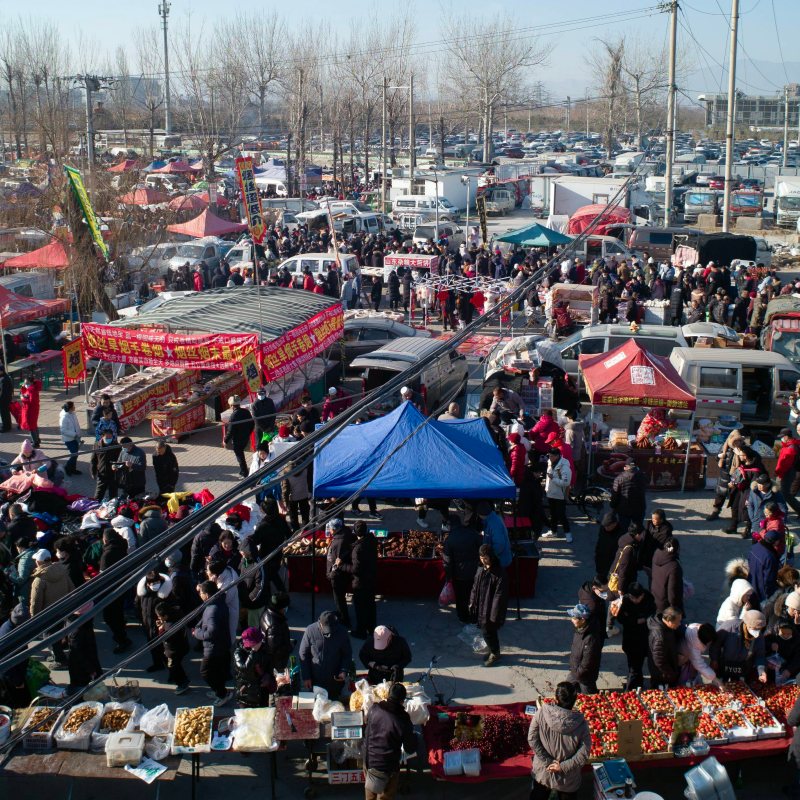
markets in beijing
Tip 1: Bargain with Confidence
Silk Street (Xiushui) or Hongqiao Pearl Market From these vendors, haggling is a norm. Begin at about one-third of the price asked and work up gradually. Display counter offers on your phone’s calculator. Keep in good spirits — it’s amazing how a little friendly energy can secure you even better prices. For pearls, have sellers define grading as you bargain.
Tip 2: Translation and Travel Apps
For all its English-lesson strengths, Panjiayuan (no more so than Daliushu) is not a land of English. Apps like Google Translate and Pleco assist with product names or short phrases. For directions to places like Laitai Flower Market, Baidu Maps or MetroMan are good. Those tools relieve stress and can help shift your focus to hunting bargains.
Tip 3: Know Payment Options
At wholesale centers like Xindongjiao or Bairong, a lot of the stalls want cash. Always have exact change ready so people can’t screw with you. In parts of Beijing popular with tourists like Sanlitun or Niujie Muslim Market, some vendors take Alipay or WeChat Pay connected to foreign cards. Carrying cash and your mobile wallet ensures that shopping becomes hassle-free.
Tip 4: Align on Schedules and Safety
Markets keep their rhythms — Panjiayuan at dawn, Xiushui midmorning and Guijie food street after dark. Afterward, head to Niujie for a relaxed dinner but fit in a trip to the Beijing Book Wholesale Market during the afternoon. Pack water, a power bank and be alert in the crowds.” Either way, the fun is elicited from scavenging for antiques, sampling treats and capturing colorful moments without concern.
FAQs for Foreign Travelers in Beijing Markets
Q: Do the stall holders at Beijing markets speak English?
At Silk Street (Xiushui) and Sanlitun, most vendors have a basic grasp of English due to the high volume of tourists. In older spots like Panjiayuan or Daliushu, English is rare and hand signs, calculators or apps like Google Translate are essential. Sellers generally grasp numbers and common words, such as “cheap” or “good price.” This melange of verbal talk and non-verbal talking is frequently in playful evidence.
Q: Can I use credit cards or mobile payments from foreign countries?
According to a story about the scam on The Beijinger expats website, cash is best at places like Panjiayuan or Hongqiao Pearl Market where stall holders will prefer RMB. Even more upscale areas such as Sanlitun do sometimes accept cards. Alipay and WeChat Pay already tie into some foreign cards, but not in many places. Bringing cash as well as a single mobile wallet is the easiest plan in most markets.
Q: Is it customary to bargain or is that considered rude?
Haggling is a way of life in markets like Xiushui and Hongqiao. Vendors start high, expecting counter-offers. Jump in with one-third of the list and work your way up. Grin and the price goes down. Haggling, far from being rude, is considered a spirited conversation.
Q: Are the antiques real at Panjiayuan?
The majority of what’s for sale at Panjiayuan is reproduction, from jade bracelets to Mao-era posters. They are good souvenirs, but they are not serious investments. There are some nearly priceless items, but you do need expertise. The true delight is in browsing and discovering kooky treasures. Auction houses are safer for collectors.
Q: What are some snacks I should try as I shop?
Beijing’s snack markets run the gamut. Sample candied hawthorn skewers in Wangfujing, jianbing pancakes in Xiushui, spicy crayfish along Guijie or sesame cakes at Niujie Muslim Market. Tea stalls in Panjiayuan also serve some local culture.
Q: What market sees the most photos sales?
Each offers unique scenes. Guijie glows red in the night, Laitai Flower Market is saturated with colors and Panjiayuan exhibits pastoral charm, while Sanlitun embraces modern design. Hongqiao’s pearl displays and Niujie’s food stalls are also powerfully visual.
Q: How crowded are these markets?
Very. Wangfujing, Nanluoguxiang are the most crowded in the evenings; Panjiayuan is busiest on weekends and Guijie gets busiest late at night. In the middle of the day, Silk Street gets loud with tour groups. Visit early or on a weekday to avoid crowds.
Q: Is it safe to eat food from the street?
Yes, if you pick wisely. Look for stalls with long lines and fast turnover in areas like Niujie or Guijie. Common snacks such as lamb skewers, fried dough twists or stuffed buns are deep-fried at a high temperature and are not likely to be contaminated. Carry sanitizer, watch the cooking and do as the locals do.

